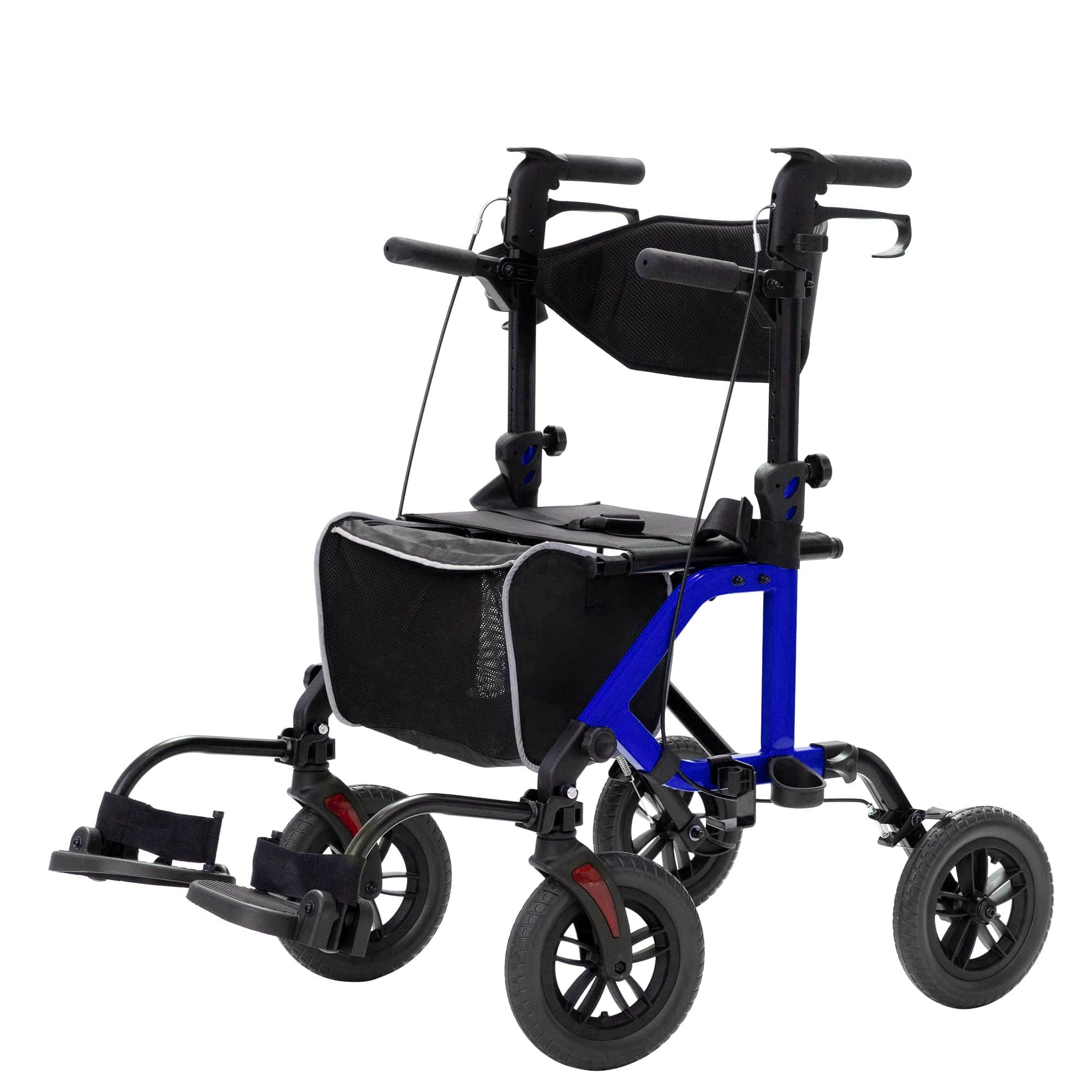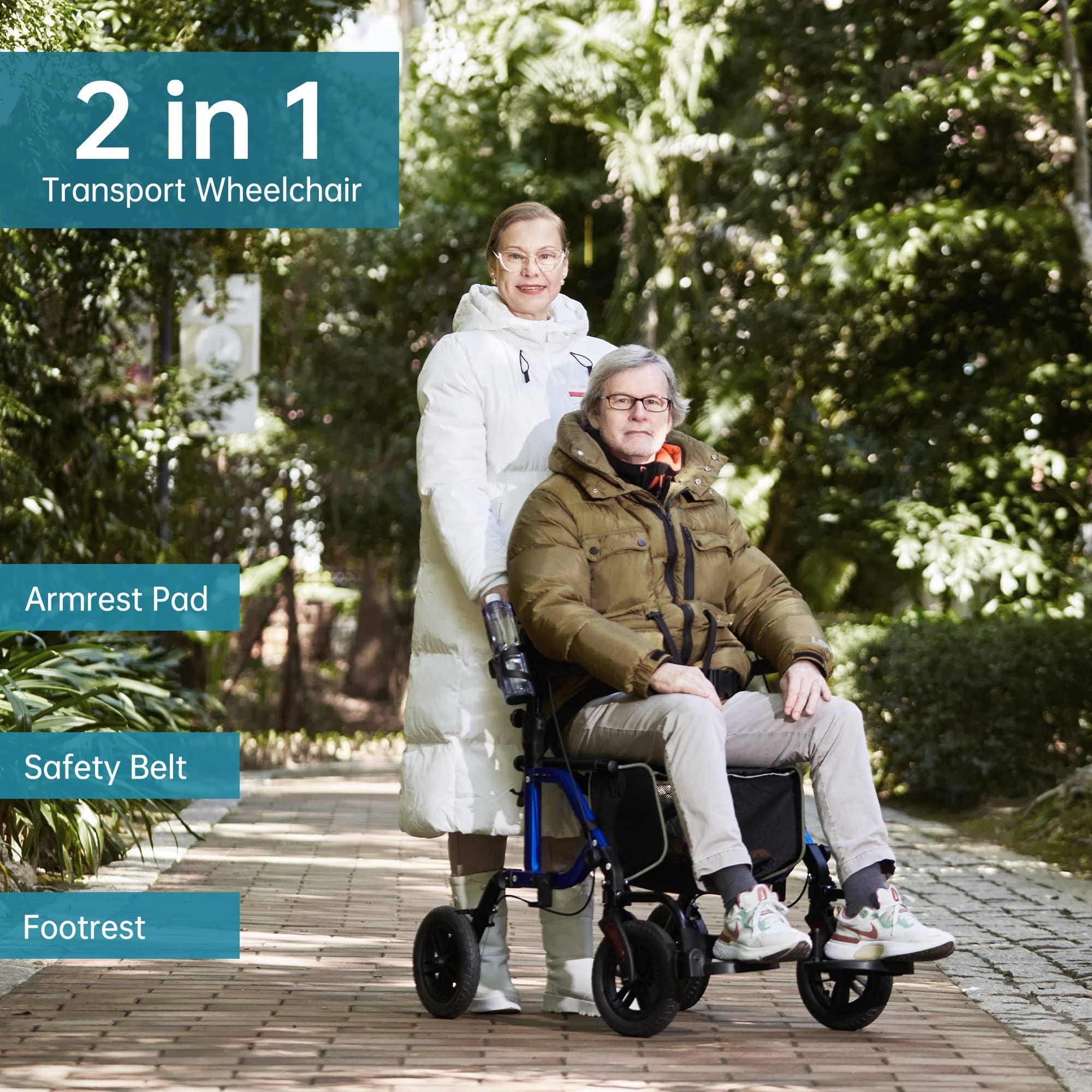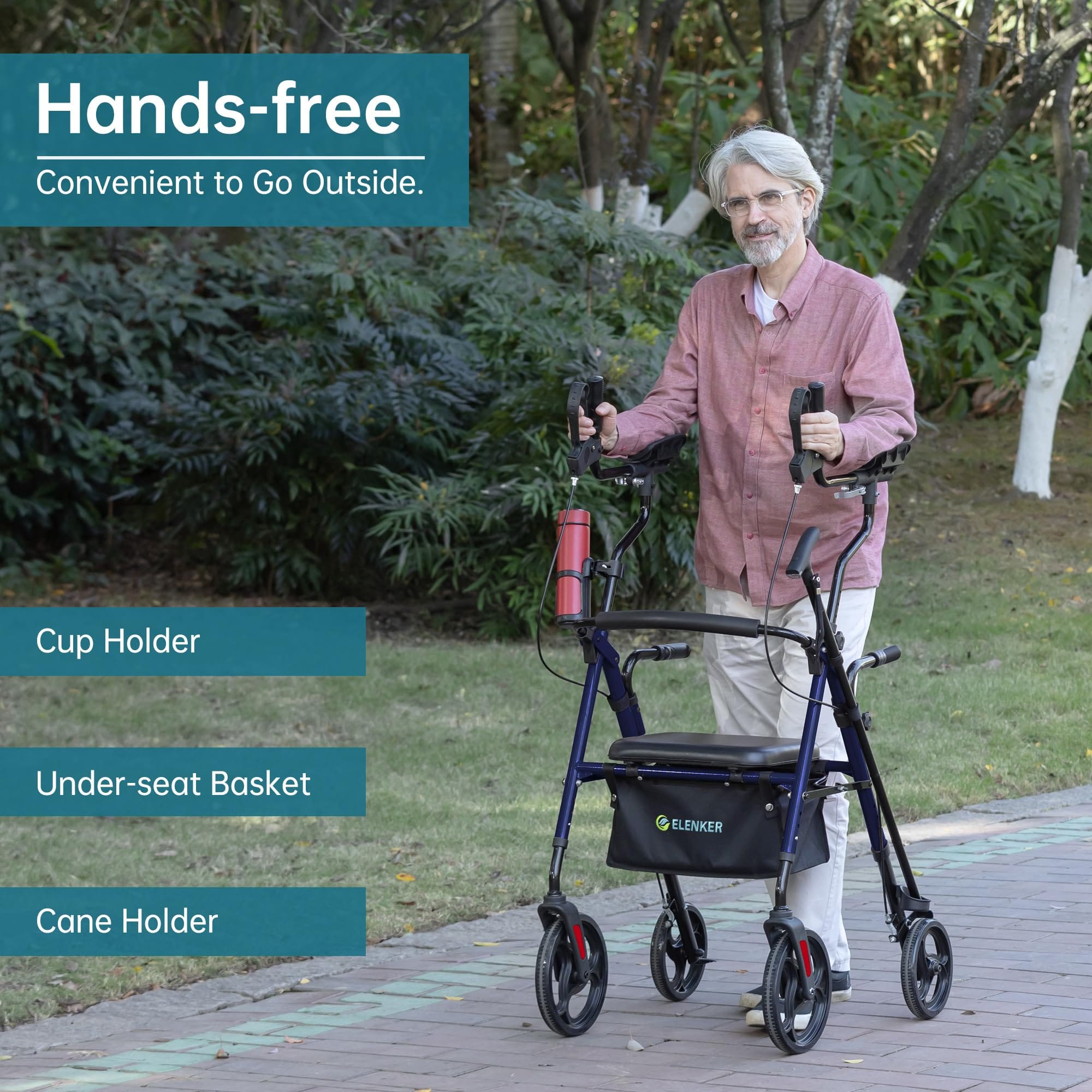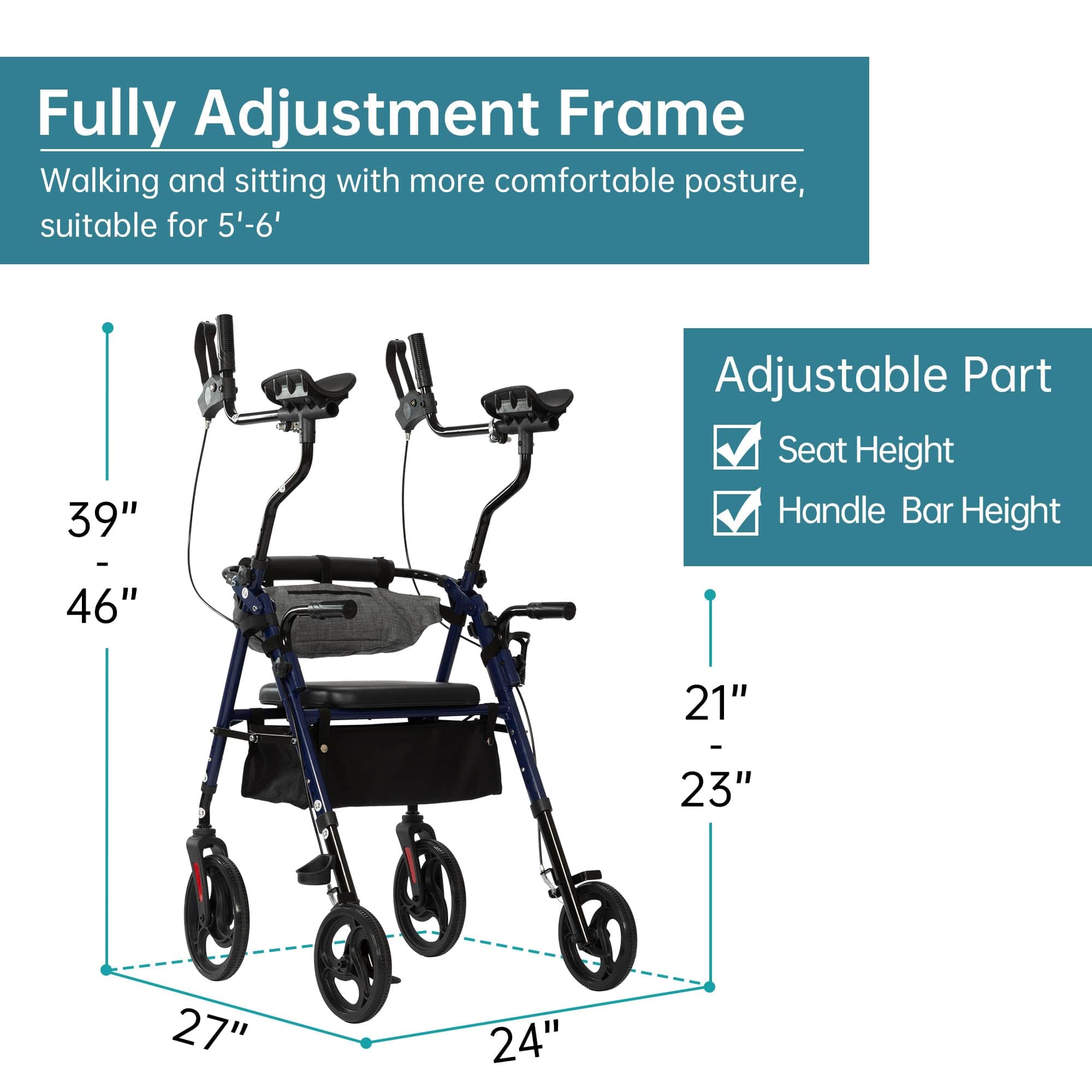How Do Rollators Benefit People with Cerebellar Ataxia?
Apr 20, 2025
Living with cerebellar ataxia can feel like your body just isn’t listening to your brain. It messes with balance, coordination, and muscle control, making everyday stuff like walking, standing up, or even reaching for a cup of coffee way more challenging. But here’s the good news: tools like rollator walkers can make life a whole lot easier.
Let’s find out how rollators help folks with cerebellar ataxia stay safe, mobile, and more independent.
What’s Cerebellar Ataxia All About?
Before diving into rollators, it’s good to know what cerebellar ataxia actually is. Basically, it’s a condition where the cerebellum—the part of your brain that controls movement and coordination—isn’t working quite right. That can lead to shaky movements, trouble walking straight, slurred speech, and poor balance. It can be caused by things like stroke, multiple sclerosis, tumors, or even be inherited genetically.

Now, imagine trying to stay balanced and walk straight when your legs and feet aren’t quite doing what you want them to. That’s where a rollator walker comes in.
What’s a Rollator Walker and Why’s It So Useful?
A rollator walker is kind of like your personal walking buddy. It’s got wheels (usually four), handlebars, and brakes—plus many have a seat for resting. It’s designed to support your weight, keep you balanced, and help you move around with confidence.

ELENKER KLD-9224-2 All-Terrain 2 in 1 Rollator Walker Transport Chair
For people with cerebellar ataxia, that extra support is super helpful. Let’s look at a few specific benefits:
1. Serious Balance Boost
When your balance is unpredictable, even walking across the living room can feel risky. A rollator walker provides steady support. Instead of wobbling or grabbing onto walls or furniture, you’ve got a solid frame to hold onto. Whether you're indoors or out, it helps keep you upright and steady.
2. Built-In Rest Stop (Yes, Please!)
One of the coolest things about a rollator walker with seat is... well, the seat! People with cerebellar ataxia often get tired easily, and having a spot to sit whenever you need to rest can be a total lifesaver. Whether you're at the grocery store or just out for a stroll, you can pause and recharge without hunting down a bench.

ELENKER KLD-9224-2 All-Terrain 2 in 1 Rollator Walker with built-in seats
3. Helps You Stay Mobile and Independent
Mobility = freedom. With a rolling walker with seat, you’re not stuck waiting for someone to help you move around. That kind of independence means you can keep doing the things you love - like visiting friends, getting outside for fresh air, or just moving from one room to another—without stressing about falling or getting hurt.
4. Posture Helper
An upright walker is another solid option, especially if you tend to hunch forward. These walkers are designed to help you stand tall while you walk, which takes pressure off your lower back and shoulders. Better posture also means better balance and less fatigue overall.

ELENKER YF-9008C Upright Rollator Walker
5. Smooth Movement and Control
A walker with seat and wheels isn’t clunky like some old-school walkers. It rolls smoothly, and most have easy-to-use hand brakes so you stay in control. The wheels help you move more naturally, which is perfect if coordination is a struggle.
6. Confidence Booster
Cerebellar ataxia can be frustrating, and sometimes even scary. Knowing you’ve got a reliable device supporting you every step of the way can give you the confidence to do things you might’ve avoided before. That can be a huge mood lift.
Picking the Right Rollator Walker
Everyone’s needs are different. When shopping around, look for:
1. A rollator walker with seat (trust us, the seat matters)
2. Adjustable height so it fits your body right
3. Easy-to-grip handles and responsive brakes
4. A lightweight frame that’s still sturdy
5. Storage basket (handy for carrying stuff!)

ELENKER YF-9008C upright rollator walker with seats, adjustable height, easy-to-grip handles, lightweight frame and storage basket
Some people might prefer an upright walker for posture reasons, while others want a standard rollator. The important thing is finding one that feels good to use and fits your specific needs.
A Quick Word on Safety
Even the best rollator walker won’t help much if it’s used incorrectly. Here are a few quick tips:
1. Always engage the brakes when sitting down or standing up.
2. Don’t lean too far forward or try to rush.
3. Practice using it around the house before heading out into busy areas.
4. If you’re not sure what kind of walker is best for you, chat with your doctor or physical therapist—they’ll steer you in the right direction.
Cerebellar ataxia definitely comes with challenges, but you don’t have to let it keep you from living your life. A rolling walker with seat or an upright walker can give you the balance, support, and confidence to move around safely and comfortably.
With the right rollator, getting from point A to B doesn’t have to be stressful—it can be smooth, steady, and a little bit empowering too.











